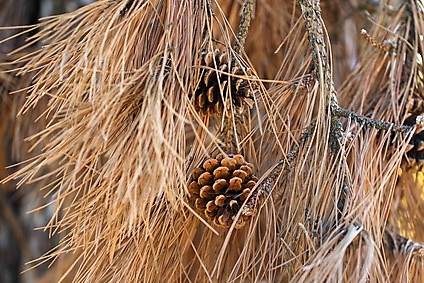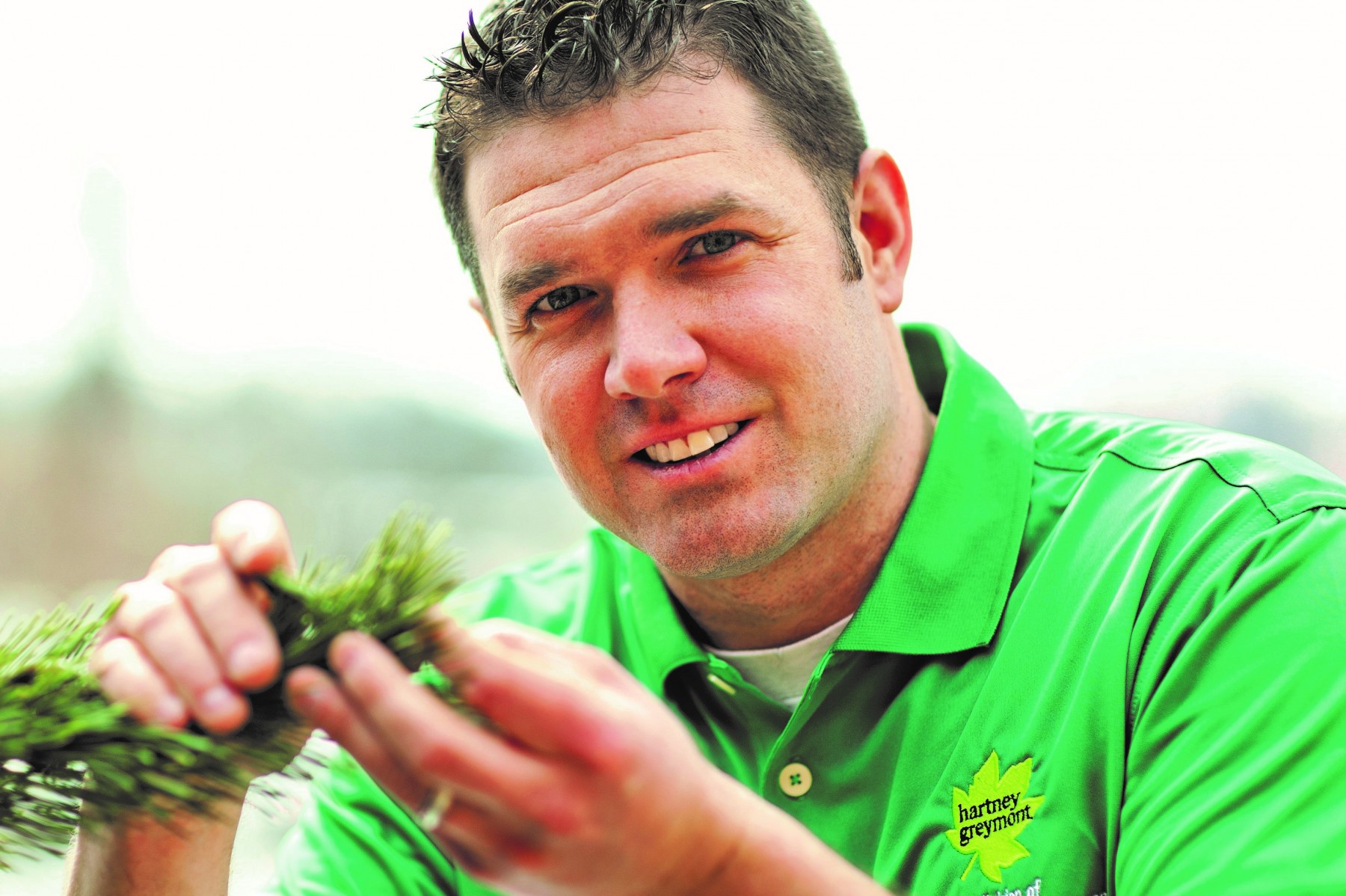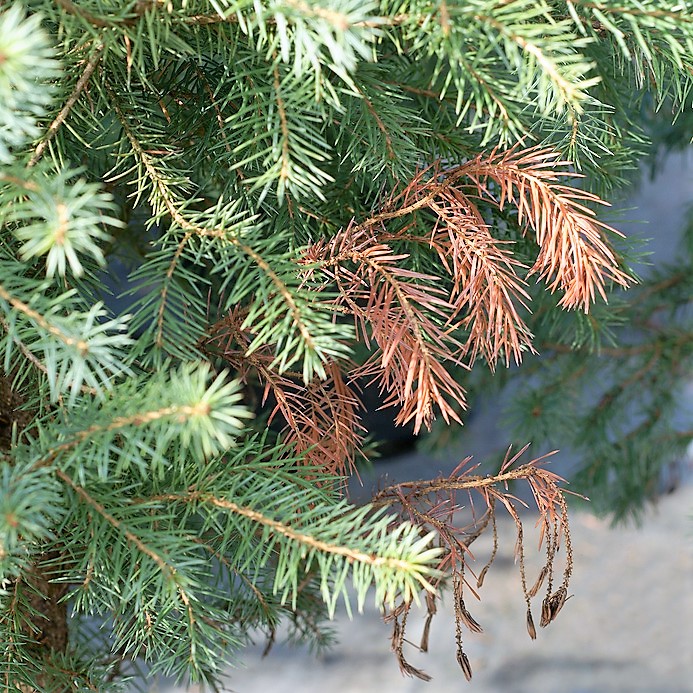
On certain nights in January this year, more than ninety percent of the U.S. shivered with temperatures under 30 degrees F. Especially vulnerable were those plants with evergreen foliage. So what’s a gardener to do? If you couldn’t trundle susceptible plants into a greenhouse or other shelter when the cold hit, how do you help them recover?
For answers, I’m turning to Kevin Narbonne, assistant district manager at Hartney Greymont, a Davey company. Kevin is a Certified Arborist in Massachusetts and a member of the International Society of Arborists.
How do you assess the damage?
It’s all about the color brown—and where you see it. “Typically,” Kevin says, “if your tree has brown needles on the interior, that’s part of its natural growing cycle.” But, browning along the tree’s exterior—that’s damage. Then the trick is to figure out what caused it.

A lot of brown, Kevin says, is from dehydration—the plant went into the cold spell without enough moisture in the foliage. Spraying with an anti-desiccant when temperatures are above 40 degrees will help.
Sunshine can make dehydration worse. Kevin says, “Sunscald happens when needles in direct sunlight turn a uniform brown from extra water loss. You may also see dead or dried areas of bark.” Wrapping burlap around the trunk can offer protection.
Weakened plants may also be vulnerable to insect or fungal attack. Look for small holes, sawdust, or large cankers. For help with diagnosis and treatment, you may need to turn to your Master Gardeners, Extension services, or qualified arborists.
So how do you know if your plant’s toast?
If you follow what Kevin suggests for dehydration, you’re likely to see recovery within a season—maybe two or three months. And if your evergreen has some dead branches? Don’t be afraid to prune before new growth begins, Kevin advises. “Arborists like me actually have optimal access when trees are more dormant.”

By pruning at that time, the plants have a couple of months to recover before spring’s new growth. But after that, if you can’t find any sign of swelling buds, or green color when you scratch the bark, your plant is probably headed for the compost heap. Take heart—this is the perfect opportunity to find a hardier substitute—something that’s happy growing in two Zones colder than yours.
When to get help
“If you see something odd or worrisome, it’s best to have an expert take a look,” Kevin notes. Here’s his advice for other situations when you should call an arborist:
- If you need to prune more than one-third of the plant.
- If you have to use a ladder to prune.
- If you’re pruning late in fall. Kevin says, “You want to make sure the plant has enough resources for success in the coming winter,”


